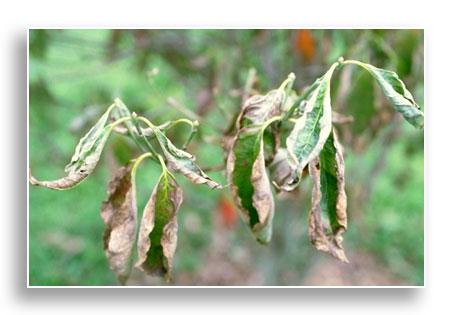Plant Health: Dogwood Powdery Mildew
By Kimberly Leonberger & Nicole Ward Gauthier

Dogwood is a popular landscape tree throughout Kentucky. However, once infected with powdery mildew, trees can develop an unattractive appearance. The disease is most prevalent during periods of high humidity and in landscapes with reduced air circulation. Some cultivars are more susceptible than others.

Dogwood Powdery Mildew Facts:
- White powdery fungal growth is the distinguishing feature of this disease (Figure 1).
- Symptoms on leaves include reddish-brown or purplish irregular blotches, yellowing, development of brown patches, scorching of tips and edges, cupping, curling, drooping (Figure 2) and premature leaf fall.
- Infection typically begins in early June and continues through September.
- Humidity favors disease development.
- Young, succulent plant growth is most susceptible.
- Caused by the fungi Erysiphe pulchra and/or Phyllactinia guttata.
- Unlikely to kill the tree but may result in decreased flower production the following year and an increase in susceptibility to insects and other diseases.
Management Options:
- Select trees with resistance to the disease such as cultivars ‘Jean’s Appalachian Snow’, ‘Karen’s Appalachian Blush’, and ‘Katy’s Appalachian Mist’, Oriental dogwood, or Cornelian cherry dogwood, which is immune to the disease.
- Maintain plant health by mulching to the drip line, removing dead branches, and selectively pruning to increase air movement within the tree canopy.
- Avoid excessive nitrogen fertilizer, heavy pruning, and excessive irrigation during the growing season
- Homeowners can apply fungicides containing myclobutanil or propiconazole. Ideal spray programs begin in May or when the disease is first detected. Always follow label directions when utilizing fungicides.
Additional Information
- Dogwood Powdery Mildew (PPFS-PR-W-13
- Homeowner’s Guide to Fungicides (PPFS-GEN-07
- Fungicides for Management of Landscape Woody Ornamental Diseases (PPFS-OR-W-14)
Photography
- White powdery fungal growth of powdery mildew on dogwood. (John Hartman, University of Kentucky)
- Cupping, curling dropping leaves is an advanced symptom of dogwood powdery mildew. (John Hartman, University of Kentucky)
About the Authors
Dr. Nicole Ward Gauthier is an Extension Associate Professor in the University of Kentucky Department of Plant Pathology. Her focus includes diseases of ornamentals (landscape, nursery and greenhouse) and fruit crops. Email at nicole.ward@uky.edu
Kimberly Leonberger is an Agriculture Extension Associate in the University of Kentucky Department of Plant Pathology. Email at kimberly.leonberger@uky.edu
